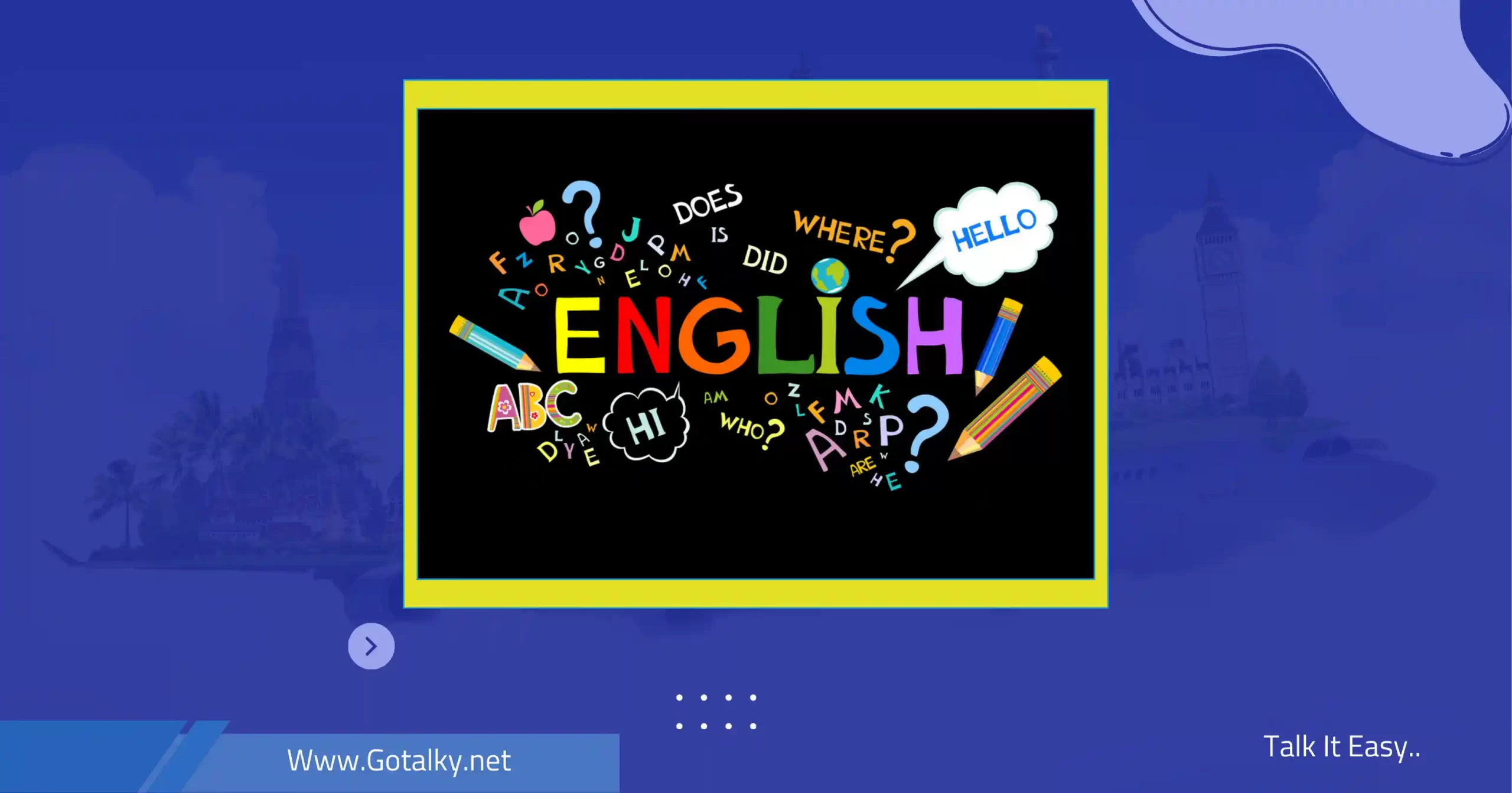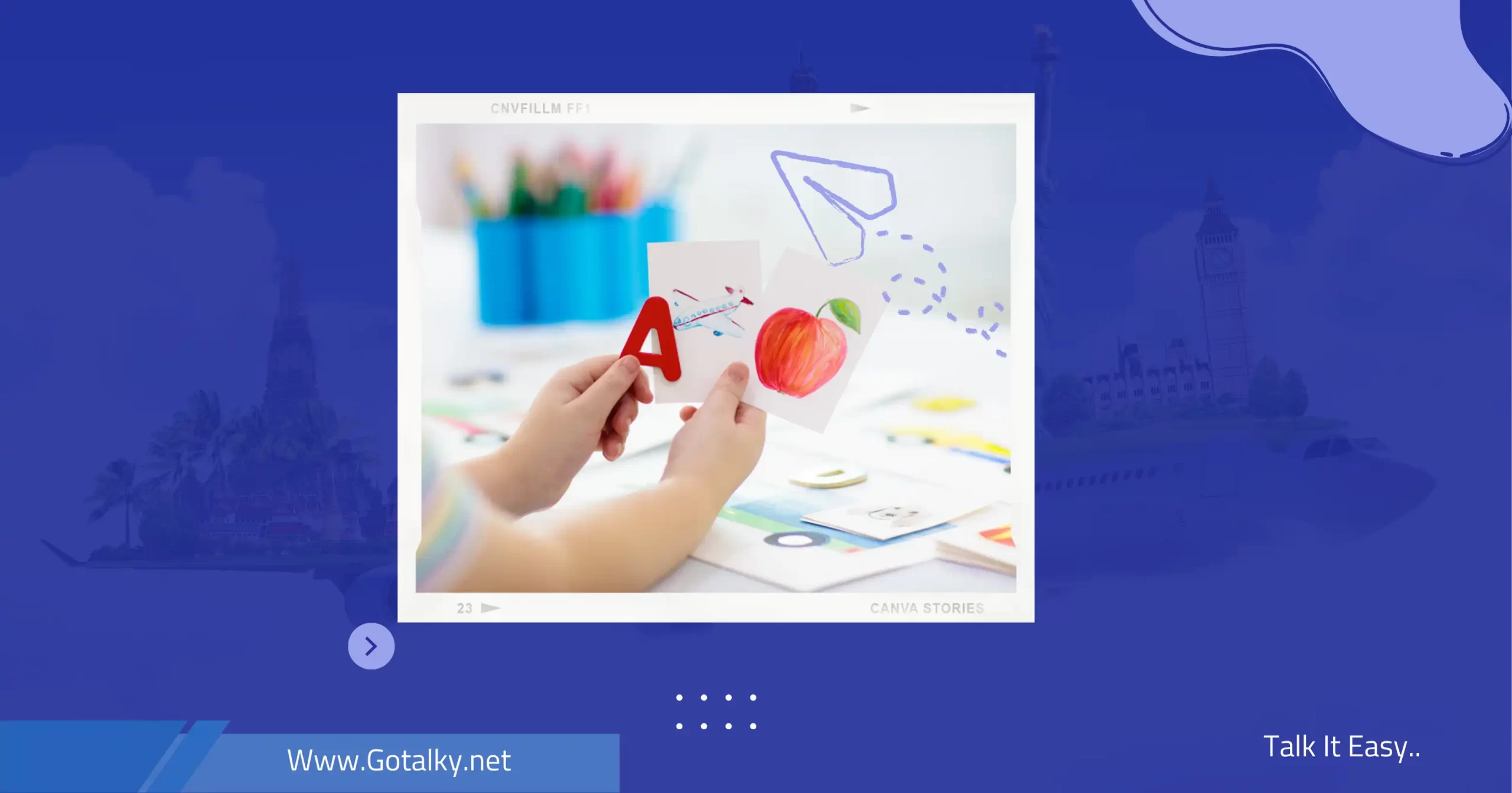ؤ and modern problems require innovative solutions. Teaching English to children provides an environment rich in mental and creative challenges. When a child learns a new language, they need to understand and transition between different linguistic systems, discover new rules, and use new vocabulary. These mental processes boost a child’s thinking abilities and develop their capacity to deal with various challenges and situations.
Among the innovative and effective tools for teaching English to children, GoTalky stands out. GoTalky is an educational electronic game designed for preschool children, offering an engaging and enjoyable learning experience. It also provides numerous courses to help both children and adults improve their English like the online English speaking course for beginners, the effective English pronunciation course, the business English speaking training program and the English conversation course for kids.
The Relationship Between Learning English and Creativity
The relationship between learning English and creativity is characterized by mutual influence and interconnection. Language serves as a means of communication and expression of ideas and emotions. Learning a new language like English expands an individual’s horizons and allows them to interact with diverse cultures. Once a person masters a new language, such as English, a vast world of resources and knowledge becomes accessible for enriching their creative work. The ability to access knowledge in different languages empowers individuals to express their ideas in new and innovative ways, supporting and nourishing the process of creative thinking.
On the other hand, learning English can directly impact one’s creative thinking abilities. The process of language learning encourages critical and analytical thinking, as individuals must understand sentence structures and vocabulary precisely. This type of thinking can positively affect their ability to generate new ideas and develop creative solutions to problems. Thus, learning English is not merely acquiring a linguistic skill; it represents an essential foundation for the development of creative thinking and innovation in various life domains.
Learning English and Cognitive Development
Scientific research has shown a close correlation between learning a language and developing cognition and intelligence. When you learn a new language like English, you activate specific areas in the brain responsible for language processing and thinking. This helps improve critical and creative thinking skills as you need to understand language rules and use them in innovative ways. Thus, it’s a good idea to start considering taking the advanced English speaking skills course, the spoken English course with native speakers, the English fluency course for non-native speakers or the accent reduction and clarity in English course provided by GoTalky.
Activities that Enhance Creative Thinking in Children
When considering how to enhance creative thinking in children, language learning-related activities can be highly beneficial. For example, you can encourage them to read imaginative stories in English and discuss the ideas and details in them. Alternatively, organize language games that promote creative use of vocabulary and sentences.
How to Master Reading Comprehension Skills in English with GoTalky
Mastering reading comprehension skills in English is essential for achieving excellence in learning and communication. To achieve this, it is recommended to follow specific steps that contribute to effectively developing these skills.
First, select texts of various levels that match the reader’s abilities, starting from simple texts to more complex ones. Additionally, provide a quiet and comfortable reading environment to help the individual focus and better understand the content.
Second, reading comprehension skills can be improved through the application of methods such as active reading and the use of various strategies. For example, the reader can identify the main ideas and supporting details in the text by recognizing prominent elements and using highlighting techniques. Using a dictionary to understand unfamiliar vocabulary and applying techniques like skimming to control reading speed and understand context can also be helpful.
Creative Thinking and Its Relationship to Early English Language Acquisition
Creative thinking is considered a fundamental skill for sustainable problem-solving and innovation in a variety of fields. The importance of early English language acquisition lies in providing strong foundations for this type of thinking. When children learn a language at an early stage in their lives, it nurtures their linguistic and communication skills comprehensively. This language proficiency can open up new realms of knowledge, thus enhancing their ability to design and implement their creative ideas effortlessly.
The Importance of Learning English for Children from a Young Age
The English language is a global means of communication and interaction in the modern age. Learning it from a young age offers children the opportunity to acquire fundamental linguistic skills that facilitate their communication with the surrounding world. Furthermore, learning English at an early age can open doors to continuous learning and cultural engagement with diverse communities. This skill encourages them to think more broadly and enables them to engage in creative experiences that promote their personal and intellectual growth.
Frequently Asked Questions
What is creative thinking in children?
For children, creative thinking manifests in their ability to innovate and develop new ideas. They see the world through different eyes and offer non-conventional solutions to challenges.
How can you help your child with creative thinking?
To enhance creative thinking in your child, it is recommended to provide an environment that encourages exploration and enjoyment of learning. This environment can include physical and artistic activities and interaction with stories and music. Stimulating your child’s curiosity and encouraging them to ask questions and explore the world around them supports the development of their creative abilities. Playful and collaborative learning experiences can also contribute to enhancing their thinking and their ability to devise solutions to challenges.
What are the strategies used in creative thinking?
Creative thinking is a complex process that requires the adoption of specific strategies and methods to achieve it. These strategies focus on guiding the mind towards non-traditional and innovative thinking. One of the most important strategies is breaking free from constraints and fixed thinking, which involves overcoming cognitive barriers and challenges by looking at problems from multiple angles and seeking non-conventional solutions.
Secondly, innovative strategies include experimenting with ideas and conducting multiple experiments. Through experimentation and testing, individuals can discover what works and what doesn’t, contributing to the development of creative solutions. This strategy enhances interaction with the surrounding world and utilizes practical experiences to develop new and effective problem-solving approaches.
Additionally, the ability to connect diverse fields and search for similarities and different details under a single concept is also an important strategy for creative thinking. This synergy between multiple concepts opens up infinite possibilities for deriving new ideas or innovative solutions.
What are some examples of creative thinking?
One of the most wonderful aspects of humanity is the ability to engage in creative thinking, where individuals generate unique ideas and solutions that bring about positive change in a variety of fields. For example, in the field of technology, we have witnessed exceptional innovations from companies like Apple and Google, where they developed smart devices and innovative applications that combine various functions and greatly enhance user convenience. In the fields of architecture and design, we have seen the development of innovative buildings that combine attractive aesthetics with environmental sustainability.
Even in the humanitarian sectors, creative thinking is evident in the development of solutions for social problems. For instance, social initiatives have emerged with the goal of providing education to children in remote areas through the use of distance learning techniques and community interaction.




